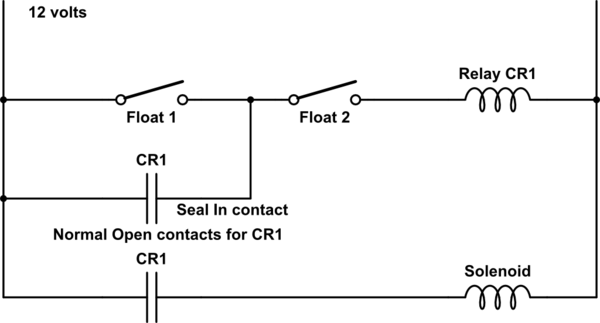A "seal in" contact is just another normally open contact on a relay.
The name "seal in" comes from the application of the contact. Most electronics people aren't likely to have heard of the terminology of "seal in". The term is used in industrial controls (which now days use relays and PLC).
Choose a relay that is suitable for your needs.
Edit 1 : Obtain a relay that has 2 contacts. Use your level switch to turn on the relay. Use one of the relay normally open contacts to drive your pump motor. Use the relay's 2nd normally open contact as your "seal in" contact, which is then wired across your level switch.
So, use your level switches to drive relays which can handle higher current than your level switches. Then the relay contacts are used where you would normally place your switches.
EDIT 2 : To search for a relay, use the words "control relay". A control relay contact can be called a "seal in" or any other name you desire.

simulate this circuit – Schematic created using CircuitLab
Here is a circuit that should work for you.
You can use 12 volts or 24 volts. Just get relay with coil voltage to match what you want to use.
